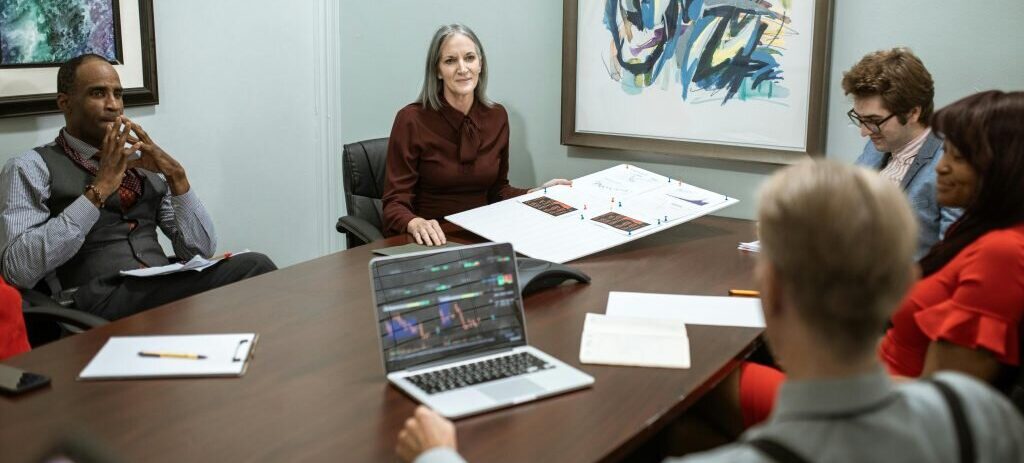8 Strategies for Board Effectiveness in Times of Change
The backbone of many nonprofit organizations is their board. These are a group of dedicated individuals who are giving their time, talent and treasure to support and advance the mission of the organization. They can be the ‘secret sauce’ for fundraising, thought partners for strategic initiatives and cheerleaders for you and your organization. Because of this, it is crucial that your organization manages and supports your board amidst times of uncertainty. Setting your board up for success during a time of change will not only confirm their support and involvement – but also have ripple effects across the organization and the community it serves. Let’s dive into how to create an effective board in times of change or uncertainty.

The Role of an Effective Board
Board effectiveness is always necessary, not just during intervals of turbulence. Nonprofits know better than most that even in times of economic and political stability, the rhythm of our work is very dynamic. Change is constant and nonprofits must be nimble to endure the twists and turns of this reality. Productive governance and effective boards are key to ensuring agility within the organization.. And it is crucial the members of those teams feel empowered to champion resilience when the organization encounters uncertainty.
We can look to other moments when we have experienced spikes in unpredictability, moments such as the COVID-19 pandemic and the 2008 recession. Throughout all of this, the effectiveness of a nonprofit’s board can make or break the organization’s ability to triumph against the odds.
What should an organization do to ensure proper board engagement and effectiveness during this time of disruption and beyond?
At its heart, board effectiveness and engagement is about leveraging your board’s resources, tapping into their unique talents, knowledge and experiences, so that your organization and leadership can advance your mission.

8 Strategies for Board Effectiveness During Times of Uncertainty
1. Develop a communication plan
Throughout an ever-changing time, as in all strong relationships, your board wants to be in the know! The first and most critical step is to create a communication plan and share this with your Board. Alert them of when and how they will be hearing from leadership on important issues and updates that will impact volunteer leaders and the organization. In times of unpredictability, the scaffolding of a solid communication plan can go a long way. By collaborating on this plan, you are building an agreement: even though you may not be certain about the future, the relationship between your organization and the board can serve as an anchor through it all.
2. Relentlessly execute your communication plan.
Determine who in your organization will be the primary contact for board members amidst this time, what line of communication you will be utilizing (phone/email/in-person check-ins). Remember, information is power and for your board to be engaged, empowered and supportive of the critical work you and your organization are doing, they need to be in the know!
3. Ground your board in their why.
Spend time at your next board meeting or engagement with members to ground them in their motivations. Affirming their role as a volunteer leader, who plays an integral role in advancing your mission and impact, is a quick and effective way to foster alignment among board members. Posing the question of “Why are you involved with ____? Why do you believe in the work we do?”, can help remind board members of the value they bring and will inspire their peers to keep up the work and remind them of the mission too
4. Highlight what makes your board special.
It is critical to consider the sustainability of your organization during times of major change. Build confidence around your board so that your staff, top donors and volunteers should know the board are on their side and ready to step in when needed. One of the main ways that you can leverage your board is to tap into their talent and unique skillsets, that each board member brings forward. Then consider how you are affirming that skillset — within your board, your organization and community through communications and storytelling.
5. Organize a board training or retreat.
A half day, or extended board meeting, can be one of the most effective ways to reveal which of the four fundraising personas each board member plays (Connector / Storyteller / Visionary / Closer) . This will support your organization’s leaders, informing them how to best involve board members. Learn more about Alford Group’s Board Development and Training opportunities here.
6. Collaborate with board members, before, during and after engagements.
A key theme and component of a board meeting, especially during a period of change within your organization and the nonprofit sector, should be fostering a collaborative space. Your board is made up of individuals who want to be part of the work you and your staff do – they’re your biggest cheerleaders! Utilize conversations and meetings to bring forward collaboration which garners support and invites all perspectives.
7. Expand your organization’s network, starting with your board’s network.
It is unlikely that every board member will bring in a new major gift donor monthly, but it is likely that you can leverage your board member’s networks so they can introduce your organization to new prospective donors.
8. Celebrate any and all wins!
It is important that your board has quick and continuous wins – even if times are tough. Consistent wins and successes for board members equal consistent wins and success for your organization – no matter the size. Specific ways to show appreciation and gratitude for the wins that your board members bring forward include:
- Send handwritten notes to board members to share your appreciation for their leadership during these times.
- Host an intimate event to celebrate and acknowledge their support.
- Recognize and elevate the visibility of the board in your communication efforts.
- Tie the board members to their impact by sharing photos, quotes or metrics.

This list of anchors is designed to be both relevant for the unprecedented moment, and feasible for you and your organization to implement. With everything happening in our world, you may only try implementing only one or two of these ideas. The important thing to remember is that behind each relationship with your board members, lie opportunities for success. These individuals committed to their role on the board of your organization because they believe in your mission—it’s time to give them the space and the tools to embody that.
Alford Group is here to support you, your organization and your board through times of change! Learn more about our Board Effectiveness Workshops.


